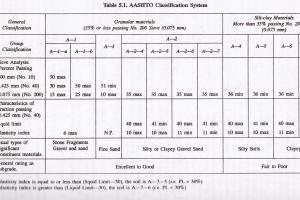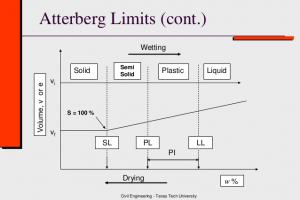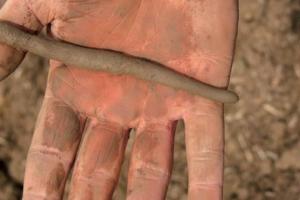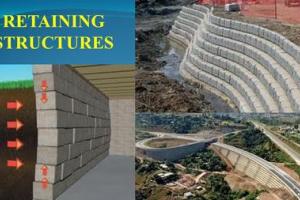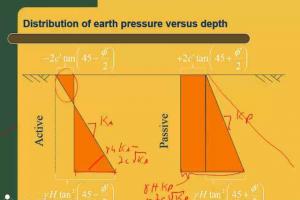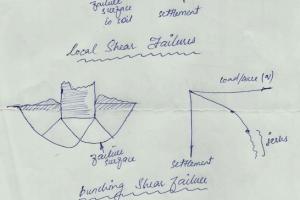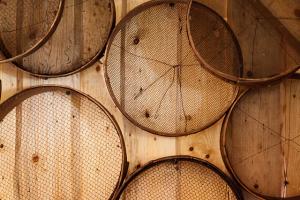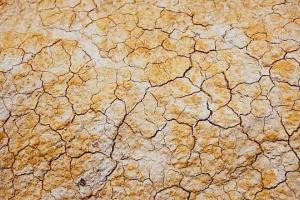To Determine Liquid Limit of Soil & Plastic Limit of Soil
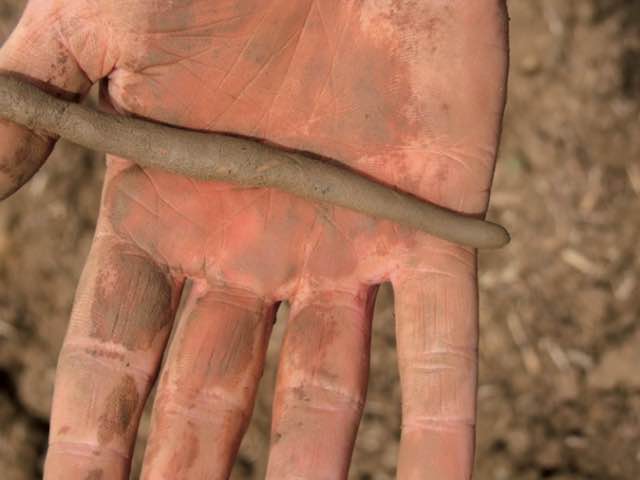
Apparatus
-
Liquid Limit Device ‑ a mechanical device consisting of a brass cup suspended from a carriage designed to control its drop onto a hard rubber base. The device may be operated by either a hand crank or electric motor.
-
Cup ‑ brass with mass (including cup hanger) of 185 to 215 g.
-
Cam ‑ designed to raise the cup smoothly and continuously to its maximum height, over a distance of at least 180o of cam rotation, without developing an upward or downward velocity of the cup when the cam follower leaves the cam.
-
Flat Grooving Tool ‑ a tool made of plastic or non‑corroding metal having specified dimensions.
-
Gage ‑ A metal gage block for adjusting the height of the drop of the cup to 10 mm.
-
Ground Glass Plate ‑ used for rolling plastic limit threads.
Significance and Use
This testing method is used as an integral part of several engineering classifications systems to characterize the fine‑grained fractions of soils and to specify the fine‑grained fraction of construction materials. The liquid limit, plastic limit and plasticity index of soils are also used extensively, either individually or together, with other soil properties to correlate with engineering behavior such as compressibility, permeability, compactibility, shrink‑swell and shear strength.
Scope
This test method covers the determination of the liquid limit, plastic limit and plasticity index of soils. The liquid and plastic limits of soils are often referred the as the Atterberg limits.
- Workability of Concrete
- Atterbergs Limits
- Plastic limit of soil
- Sieve Analysis
- Civil Lab Tests
- Liquid Limit
- Liquid Limit in Sub grade
- Plastic Limit Test
Procedure for Liquid Limit Test
![]() See Also: Definition of Liquid Limit | Background of Liquid Limit Test.
See Also: Definition of Liquid Limit | Background of Liquid Limit Test. 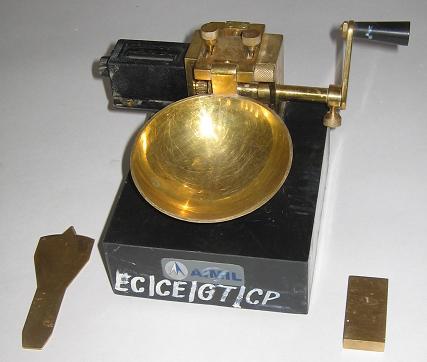
-
Place a portion of the prepared sample in the cup of the liquid limit device at the point where the cup rests on the base and spread it so that it is 10mm deep at its deepest point. Form a horizontal surface over the soil. Take care to eliminate air bubbles from the soil specimen. Keep the unused portion of the specimen in the storage container.
-
Form a groove in the soil by drawing the grooving tool, beveled edge forward, through the soil from the top of the cup to the bottom of the cup. When forming the groove, hold the tip of the grooving tool against the surface of the cup and keep the tool perpendicular to the surface of the cup.
-
Lift and drop the cup at a rate of 2 drops per second. Continue cranking until the two halves of the soil specimen meet each other at the bottom of the groove. The two halves must meet along a distance of 13mm (1/2 in).
-
Record the number of drops required to close the groove.
-
Remove a slice of soil and determine its water content, w.
-
Repeat steps 1 through 5 with a sample of soil at a slightly higher or lower water content. Whether water should be added or removed depends on the number of blows required to close the grove in the previous sample.
Note: The liquid limit is the water content at which it will takes 25 blows to close the groove over a distance of 13 mm. Run at least five tests increasing the water content each time. As the water content increases it will take less blows to close the groove.
Observations & Calculations:
| Sample number | 01 | 02 | 03 |
| Container number | 24 | 21 | 25 |
| Number of Blows | 17 | 25 | 34 |
| Mass of empty container (M1), gm | 44.9 | 46 | 44.6 |
| Mass of container + wet soil (M2), gm | 78.3 | 81.3 | 76.8 |
| Mass of container + dry soil ( m3), gm | 70 | 75.30 | 74.10 |
| Water content= w = (M2 - m3/ m3 - M1) x 100, % | 33.07 | 20.30 | 10.00 |
Liquid Limit, LL
Plot the relationship between the water content, w, and the corresponding number of drops, N, of the cup on a semi‑logarithmic graph with water content as the ordinates and arithmetical scale, and the number of drops on the abscissas on a logarithmic scale. Draw the best fit straight line through the five or more plotted points. Take the water content corresponding to the intersection of the line with the 25 drop abscissa as the liquid limit, LL, of the soil.
Graph
 Following is the graph of relation between water content and number of blows
Following is the graph of relation between water content and number of blows
Precautions
- After performing each test the cup and grooving tool must be cleaned.
- The number of blows should be just enough to close the groove.
- The number of blows should be between 10 and 40.
Applications
- The value of liquid limit helps in classification of fine grain soil.
- The values of liquid limit are required to calculate flow index, toughness index etc.
Limitations of Liquid Limit Test
Procedure for Determination of the Plastic Limit
![]() See Also: Definition of Plastic Limit
See Also: Definition of Plastic Limit
-
From the 20g sample select a 1.5 to 2 g specimen for testing.
-
Roll the test specimen between the palm or fingers on the ground glass plate to from a thread of uniform diameter.
-
Continue rolling the thread until it reaches a uniform diameter of 3.2mm or 1/8 in.
-
When the thread becomes a diameter of 1/8 in. reform it into a ball.
-
Knead the soil for a few minutes to reduce its water content slightly.
-
Repeat steps 2 to 5 until the thread crumbles when it reaches a uniform diameter of 1/8 in.
-
When the soil reaches the point where it will crumble, and when the thread is a uniform diameter of 1/8", it is at its plastic limit. Determine the water content of the soil.
Note: Repeat this procedure three times to compute an average plastic limit for the sample.
Calculations
Plastic Limit, PL
Compute the average of the water contents obtained from the three plastic limit tests. The plastic limit, PL, is the average of the three water contents.
Plasticity Index
Calculate the plasticity index as follows: PI = LL ‑ PL where:
LL = liquid limit, and PL = plastic limit.
Precautions
- The apparatus required for the experiment should be clean.
- All the readings should be noted carefully.
- Practical applications
- The value of liquid limit and plastic limit are used to classify fine grained soil.
- The values of liquid limit and plastic limits are used to calculate flow index, toughness index and plasticity index of the soil.
Observations and calculations:
| Number of container | 24 | 25 |
| Weight of empty container(M1) gm | 45.7 | 44.5 |
| Weight of container + wet soil (M2) gm | 50.6 | 49.5 |
| Weight of container + dry soil ( m3) gm | 48 | 46 |
| Water content = (M2- m3/ m3-M1)100 % | 1.13 | 1.17 |
Average plastic limit = (1.13 + 1.7)/2 =1.15%



